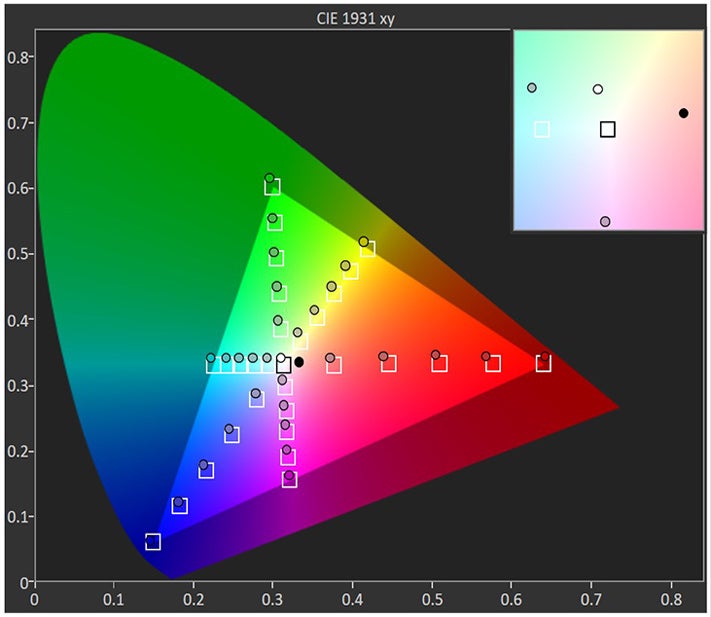Apple iPhone 16 Review: A Step Forward, But Not a Giant Leap
We may earn a commission if you make a purchase from the links on this page.

iPhone 16 Intro
Apple's latest base flagship, the iPhone 16, promises a fresh take on the iPhone experience. But while Apple has tried its best to hype up AI-powered features that will enhance everyday tasks, many of these innovations are slated for future updates. So, what's the immediate appeal for the price tag of $800?
One notable addition is the new Camera Control button, a dedicated touch and pressure-sensitive key for controlling the camera system. This new button aims to streamline photography and videography experiences by offering quicker and more precise control of the camera system.
Beyond the button, the iPhone 16 offers a more powerful and energy-efficient processor, improved battery life, and a more capable ultra wide camera. While there are additional refinements, these are the core enhancements users can expect from Apple's latest standard iPhone.
Table of Contents:
Also read:
iPhone 16 Specs
New chip, larger battery
Let's start with an overview of the iPhone 16 specs:
| iPhone 16 | |
|---|---|
| Size, weight | 147.6 x 71.6 x 7.8 mm, 170g |
| Screen | 6.1" OLED 60Hz |
| Processor | A18 3nm |
| RAM, Storage | 8/128GB 8/256GB 8/512GB LPDDR5 |
| Cameras | 48MP main 12MP ultra 12MP front |
| Battery | 3,561 mAh |
| Charging | USB-C 27W wired 25W MagSafe |
iPhone 16 Design and Display
Evolution requires change

The Camera Control button is a bit... awkward. (Image credit PhoneArena)
To capture Spatial Video, the iPhone 16's wide and ultra-wide cameras are positioned vertically, similar to the iPhone X. This new arrangement eliminates the need for a bulky camera island, resulting in a more compact design. However, it may compromise stability when the phone is placed flat.
A more significant addition is the highly anticipated Camera Control button. Located on the side of the device, this pressure-sensitive button offers intuitive control over the camera system, both within the Camera app and third-party applications.
Speaking of buttons, the iPhone 16 now also gets the Action button that debuted with last year's Pro models. It serves the exact same purpose, allowing users to set up quick access to features and apps, with the default one being toggling silent mode on and off.
Biometrics, or the way you secure your phone, are still carried out via Apple's FaceID tech, which is the best in its class so far.
The iPhone 16 colors are always a big talking point prior and post announcement. Here are the ones you can pick from this year:

iPhone 16 color options this year are more vibrant.
- Black
- White
- Pink
- Teal
- Ultramarine

Another year, another 60Hz display for the regular iPhones. (Image credit PhoneArena)
The display's refresh rate continues to be a point of contention. At 60Hz, it falls short of the expectations set by competitors. The rest of the display specs are also unchanged. We have an OLED panel with 2556 x 1179 pixels resolution and a 20:9 aspect ratio with the familiar Dynamic Island camera cutout.
Rather surprisingly, the display's maximum brightness levels also remain the same, with a peak brightness of 2000 nits.
But when it comes to the display's durability, the iPhone 16 comes with a 2nd-gen Ceramic Shield that the company claims is 50% tougher than the first generation. Ceramic shield was already among the best display glass out there, but competition caught up recently and we are not too convinced that this so-called "2nd-gen" is anything more than marketing talk, as Apple is very ambiguous about it.
But when it comes to the display's durability, the iPhone 16 comes with a 2nd-gen Ceramic Shield that the company claims is 50% tougher than the first generation. Ceramic shield was already among the best display glass out there, but competition caught up recently and we are not too convinced that this so-called "2nd-gen" is anything more than marketing talk, as Apple is very ambiguous about it.
Not only did Apple keep the refresh rate at the outdated 60Hz on its $800 phone, but the display is also the dimmest one we have tested among the latest generation of flagship phones. Around 1000 nits is not on par with today's standards, which are being set by Google and Samsung.
iPhone 16 Camera
A new feature and a slightly better ultra-wide

The iPhone 16 comes with a new layout for its main and ultrawide cameras.
Apart from the fact that it now supports Macro Mode, the iPhone 16 has almost the exact same score as its predecessor in our Camera Score ratings. In other words, it does more then great in most of the areas besides besides zoom quality, as it doesn't have a dedicated telephoto camera.
iPhone 16 camera specs:
- Main — 48MP, f/1.6 aperture, 26mm, AF
- Ultra-wide — 12MP, f/2.2, 12mm, AF, Macro photography
- Selfie — 12MP, f/1.9, AF
We should probably start with the new Camera Control button, which is the biggest selling point besides the upcoming AI features. It provides users with a quick access to the iPhone's cameras, and has different functionality depending on how strong you press it. It's also touch sensitive, allowing for gestures via swiping your finger.
You can press once to launch, and then press again to snap a photo. A press and hold will start recording video, all with haptic feedback that gives cues. A lighter press reveals clean preview where all of the settings disappear. A light press also reveals a new overlay for quick access to zoom levels, while pressing lightly twice reveals for other controls such as aperture, Photographic Styles, and more. Oh, and the button also works with 3rd party apps, like Snapchat.
But in our experience with the new Camera Control button we couldn't help but see it as somewhat superfluous. Depending on the size and shape of your hands it can be very uncomfortable to work with, and that's both for vertical and horizontal orientation.
We had to go out of our way to use this new feature, which kind of defeats its purpose, which is the quick access to the camera and its controls. So, our verdict on Camera Control on the iPhone 16 is that it is useful as a camera shutter button if its position is comfortable for the user, but other than that it is not that convenient.
Besides the Camera Control, there are a few more camera-related changes coming to the iPhone 16. Most notable out of all iPhone 16 camera upgrades is Macro photography (and auto focus), which has finally trickled down from the Pro Models. This was a feature Apple introduced with the iPhone 13 Pro and Pro Max, and it is one that many users love to play around with, so it is kind of a big deal if it finally comes to the standard model.
The ultra-wide camera now has an aperture of f/2.2 vs the f/2.4 on the iPhone 15. The pixel size has also increased from 1.0µm to 2.0µm. Both these upgrades help the camera capture more light and therefore better images.
Main Camera
The detail you get with the main camera during the day is plenty, thanks to the higher 24MP resolution it defaults to. The one difference we noticed from last year is that the post-processing appears to make shots brighter, lifting up shadows more and revealing more detail in them. Colors also look pretty spot on to what the look like in real life.
The main camera also performs well during the night and in low-light scenarios. We would have liked to see the darker areas a bit brighter though, the images feel darker than they should be.
Zoom Quality
You don't get the best detail when zooming in via tha main camera, as the zoom is not optical. The good news is that colors stay consistent and the algorithm does not make letters and numbers appear weird like in last generation.
Ultra-wide Quality
The ultra-wide camera continues to give decent results, but the lack of sharp detail also continues to be an issue. The camera also crushes the shadows in some instances, which means that there is no detail in the darker areas.
Selfies
The color accuracy of the front camera is just as great as with the ones on the back of the iPhone 16. Images lack clarity and sharpness though, especially if you compare them to photos taken by the Pixel 9's selfie camera. It's time Apple improved the detail on iPhone selfies.
Video Quality
Stay tuned for video samples and our thoughts on the video quality of the iPhone 16.
iPhone 16 Performance & Benchmarks
A18 brings more power at a lower energy cost

The iPhone destroys the competition and its predecessor in processing power, but lags behind the Galaxy S24 in terms of graphical performance. (Image credit PhoneArena)
The standard iPhone 16 rocks the new Apple A18 Bionic chip, which is built on TSMC's new 3nm process called N3E. Apple says this new chipset has a 30% faster CPU and a 40% faster GPU compared to the A16 inside the iPhone 15. Both the CPU and GPU are said to be more power efficient too, which definitely helps with the improvements to battery life we noticed during our tests.
Apple has also added a new thermal substructure made from aluminum that gives 30% higher sustained performance. The phone definitely felt cooler in comparison to the predecessor during our benchmark tests that tax the system to its maximum.
The new silicon also allows for better hardware accelerated ray tracing, which Apple claims delivers 5x higher frame rates while playing games that support such graphics. Oh, and while we are on the topic of gaming, the iPhone 16 also supports AAA games, just like the Pro models did last year.
The truth is that last year's model was already more than great for mobile games, and we had the same smooth experience with the iPhone 16 as we did with the iPhone 15 last year during gaming sessions. What would have made it smoother, however, was if it had a 120Hz display refresh rate...
Additionally, the A18 Bionic also comes with a new 16-core neural engine that's 2x faster at performing machine learning tasks, laying the ground for the upcoming Apple Intelligence features, although those are yet to become available.
The A18 Bionic is a beast of a chipset for a phone that costs $800, and that shows in our benchmark tests. The Galaxy S24 is the only phone that beats it when it comes to graphical performance, and it is not by much.
The base storage is once again start at 128GB, with 256GB and 512GB being the other two options. Apple did not state the exact RAM, but we have reason to believe it is 8GB this year, which is said to be the minimum requirement for all new iPhone 16 AI features.
iPhone 16 Software
First batch of Apple Intelligence features is out, two more to go...

The iPhone 16 launched with iOS 18, but Apple held back on its anticipated “Apple Intelligence” features. Finally, on October 28th, the iOS 18.1 update introduces the first wave of Apple Intelligence capabilities, including notification summaries, writing tools, and a new Clean Up feature in Photos.
More advanced AI features—like Siri’s ChatGPT integration, Visual Intelligence, Image Playground, Genmoji, and Image Wand—are planned for iOS 18.2, expected in December. Apple’s most ambitious update, including a fully reimagined Siri, is slated for iOS 18.3 in early 2025.
More advanced AI features—like Siri’s ChatGPT integration, Visual Intelligence, Image Playground, Genmoji, and Image Wand—are planned for iOS 18.2, expected in December. Apple’s most ambitious update, including a fully reimagined Siri, is slated for iOS 18.3 in early 2025.
Check out our Apple Intelligence explained article to get all the details and our impressions of the Apple Intelligence features that have already been released, and what we can expect from the upcoming ones.
iPhone 16 Battery
A larger and redesigned battery
The iPhone 16 battery life is not its best aspect. Despite its larger battery compared to the previous generation, it still ranked in the 40s of our Battery Score listing. Still, for most users it will do alright and will last for a full day with regular use. If you use the camera and watch a lot of video, however, that might not be true.
As you can see from the graphs above, the iPhone 16 is generally better than its predecessor, but mostly on par with the main competition from Google and Samsung.
The topic of charging is a bit weird this year. Apple stated that the iPhone 16 has faster wireless charging, going from 15W to 25W via MagSafe wireless chargers. However, there was a bit of confusion about its wired charging speeds.
The iPhone 16 charges at 20W under normal circumstances, not 45W. During our tests we did manage to make it jump to around 38W but only when it was under extremely heavy loads such as benchmark testing or playing games. This is new, and we assume Apple has gone this route to help the phone charge at the same speed even when it is being used during charging.
iPhone 16 Audio Quality and Haptics
This year Apple has introduced some audio-related upgrades for the new Pro models such as Audio Mix and "studio quality mics", but none of those are present on the iPhone 16. The audio quality is similar to what it was on last year's models, which is to say it is very good! The sound is rich and there is even some nice umph to it. The haptics situation is exactly the same, including those related to the new Capture Control button.
Should you buy it?

You can easily skip the iPhone 16, as it seems more like a superficial update. (Image credit PhoneArena)
If you are upgrading from an older iPhone model than an iPhone 15 or iPhone 15 Pro might be a much better option, as this year's standard iPhone isn't too big of an upgrade. The iPhone 15 Pro in particular will also get Apple Intelligence, which is one of the main selling points for the new iPhones.
Some of the reasons to buy an iPhone 16 would be its slightly better battery life and the faster wireless charging. Now, yes, the A18 chip appears to be much more capable, but unless you want to play AAA games it is unnecessary horse power that you probably won't use.
There's also the new Camera Control button, but that hardly sounds like a must-have feature for your average user. The improved ultra wide camera is also not a bad upgrade, but unless you have reaaally wanted a Macro Mode without buying a Pro iPhone it's not that big of a deal.
But good chunk of what Apple is promising with the iPhone 16 is already available on the Android side of the market, like with the Pixel 9 or the Galaxy S24, so if you are not hellbent on sticking to iPhone, you might want to look at those options too.
Follow us on Google News











































Things that are NOT allowed:
To help keep our community safe and free from spam, we apply temporary limits to newly created accounts: